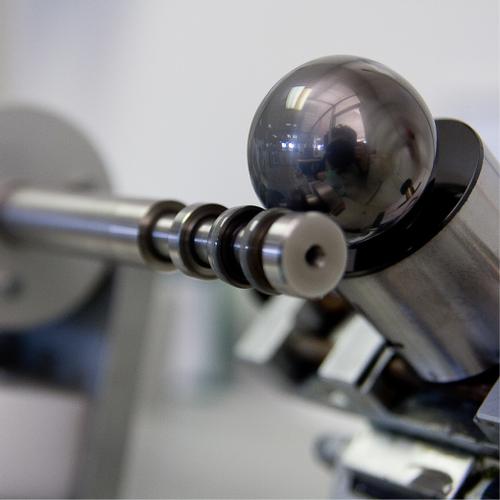PVD vs Electroplating
Which is Right for Your Application?
Electroplating is a process that has been used by industry for many years. In today's fast-paced business environment companies need to keep pace with the constant evolution that takes place due to technology improvements. Oftentimes, companies will use electroplating by default because this is what has always been used. However, TS NCT chooses to offer PVD over electroplating for multiple reasons.
Electroplating Defined
When a product is electroplated it is placed into a tank of solution containing the material to be deposited. The cathode (negative pole) of the power supply is attached to the product to be plated. The anode (positive pole) of the power supply is attached to the material you wish to deposit. When the power is applied from the power supply the negatively charged product attracts the positive ions of the material you wish to deposit that are in the plating solution. The anode material will replenish the material in the solution that is deposited on the substrate
The electroplating technology is a low energy form of plating. Because it is a low-energy electrochemical process, ions arrive at the substrate with relatively low energy and deposit on the surface. Large edge build-ups are common and uncontrollable in this process. The part geometry can also affect the deposit's uniformity. Channels and crevices are very difficult to electroplate without receiving a large build-up on the outer edges.
The Advantages of PVD
PVD coating is a vacuum deposition process that has received increasing use in recent years and is no longer seen as a laboratory process. It has been scaled up to handle large complex part geometries at an affordable cost. Many companies have realized benefits from converting their product from electroplating to PVD coating. Coatings can be deposited from room temperature to as high as 500 degrees Celsius depending on the substrate and the application.
The PVD process provides a more uniform deposit, improved adhesion up to six times greater in some cases, wider choice of materials to be deposited and there are no harmful chemicals to dispose of. Because PVD coating is more environmentally friendly and chemical disposal costs are minimal, the cost of PVD coating and electroplating is very close on some products.
When product is PVD coated it is placed in a fixture and placed in the vacuum vessel. The unit is pumped down to the desired vacuum pressure. Depending on the substrate and the process used the product will be preheated and sputter cleaned. After the sputter cleaning is complete, a negative charge is applied to the cathode material and, if the substrate is conductive, a negative bias is applied to the substrate. The material being deposited arrives at the substrate at a high energy level and will travel along the substrate surface until it reaches a preferred nucleation site. The continuous bombardment of ions from the source sputters the depositing material so you do not receive the large edge build-ups that are common with electroplated coatings.
This bombardment is controlled carefully so as not to overheat the substrate. Due to the higher energy levels of the ions arriving at the surface of the product the adhesion is substantially better than that provided by electroplating. The deposition is continued until the desired coating thickness is achieved and the parts are removed from the chamber. Microprocessors control the entire deposition process to ensure consistent results each time the product is processed. Each process can be recalled through a library of stored recipes that are loaded and used for each coating process.
For a more detailed description of the PVD process, choose the PVD Process option from the menu.
For additional information concerning PVD coating's advantages over electroplating or to see if your application is a candidate for PVD coating, contact us.






